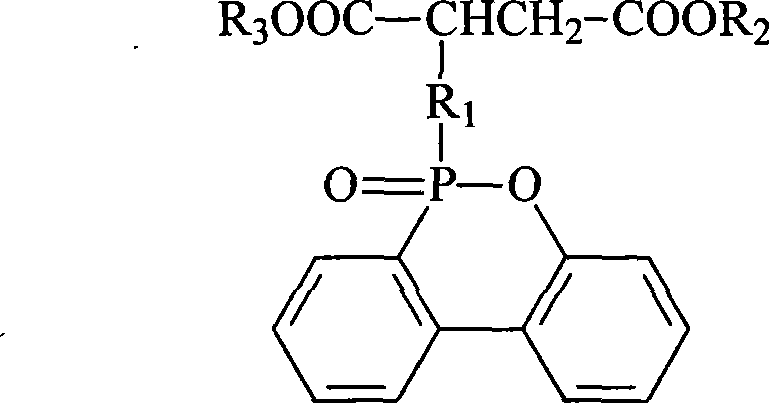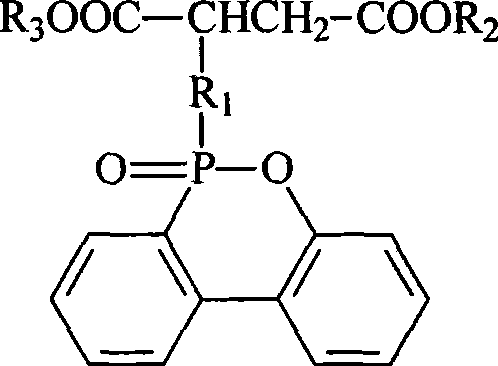Preparation of flame-retardant polyester for preparing fiber
A technology of flame-retardant polyester and fiber, which is applied in the field of preparation of flame-retardant polyester to achieve the effect of reducing and improving mechanical properties
- Summary
- Abstract
- Description
- Claims
- Application Information
AI Technical Summary
Problems solved by technology
Method used
Image
Examples
Embodiment 1~4
[0027] 1. Esterification process:
[0028] Monomer terephthalic acid and ethylene glycol undergo esterification reaction, the molar ratio of monomer feed is terephthalic acid: ethylene glycol = 100: 110-200, the reaction temperature is 260-280 ° C, and the reaction pressure is 100-300 kPa , The residence time of the reactants is 1.5 to 4 hours.
[0029] The way of adding nano-kaolin is selected before the esterification reaction. When the raw materials are beaten and mixed, the required amount of nano kaolin particles is added to the esterification raw materials, and the average particle diameter of the nano kaolin particles is 200-500nm. The specific feeding amount of nano-kaolin particles in each embodiment is determined according to the content of nano-kaolin in the flame-retardant polyester product, and the content of nano-kaolin in the flame-retardant polyester product of each embodiment is shown in Table 1;
[0030] 2. Precondensation and polycondensation process:
[...
Embodiment 5~8
[0040] The method of adding nano-kaolin is changed to adding before the polycondensation reaction. The nano-kaolin particles are beaten and mixed with the reactive flame retardant and ethylene glycol to prepare a slurry with a total concentration of 20-45wt%, and then pass through the oligomer pipeline Add to the reaction system together with the reactive flame retardant. All the other are with embodiment 1~4.
PUM
| Property | Measurement | Unit |
|---|---|---|
| The average particle size | aaaaa | aaaaa |
| Intrinsic viscosity | aaaaa | aaaaa |
Abstract
Description
Claims
Application Information
 Login to View More
Login to View More - R&D
- Intellectual Property
- Life Sciences
- Materials
- Tech Scout
- Unparalleled Data Quality
- Higher Quality Content
- 60% Fewer Hallucinations
Browse by: Latest US Patents, China's latest patents, Technical Efficacy Thesaurus, Application Domain, Technology Topic, Popular Technical Reports.
© 2025 PatSnap. All rights reserved.Legal|Privacy policy|Modern Slavery Act Transparency Statement|Sitemap|About US| Contact US: help@patsnap.com



